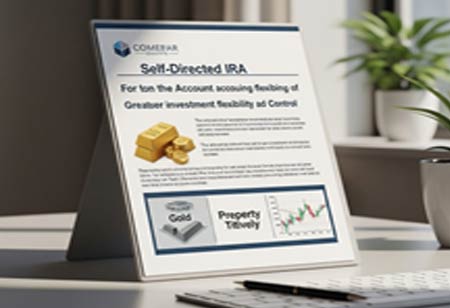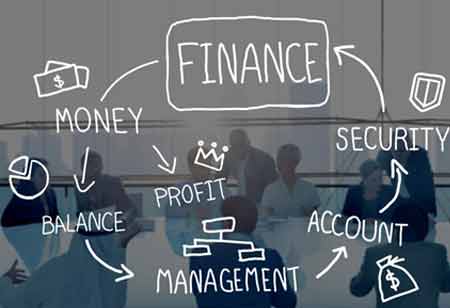CLOSE
Specials
- Trading Solutions APAC
- Wealth Management MENA
- CPA Firms Canada
- Financial Risk Management APAC
- Investment Banking APAC
- Corporate Advisory APAC
- Regtech APAC
- Escrow Services
- Digital Banking Latam
- Investment Advisory APAC
- Treasury Management Europe
- RegTech Europe
- Financial Risk Management Europe
- Mortgage Broker
- Financial Licensing Europe
- RIA Advisory Europe
- FinTech Canada
- Financial Asset Management APAC
- Financial Health Europe
- Trading
- Investment Services Europe
- Lending Mangment Latam
- Payment Solution Europe
- Broker Dealer Firms Canada
- Alternative Investments Canada
- Financial Fraud
- Investment Management Latam
- Investment Banking Canada
- Lending Management
- Payment Solution
- Proprietary Trading Europe
- Wealth Management
- FinTech
- Financial Brokerage Firm APAC
- Investment Advisory Europe
- Claim Adjusting
- Claim Adjusting APAC
- Mergers and Acquisitions Consulting APAC
- Equipment Financing
- CPA Firms
- Mergers and Acquisitions Consulting Canada
- Investment Services
- Valuation Services Canada
- Wealth Management APAC
- Broker Dealer Firms
- Debt Collection Agencies
- Mergers and Acquisitions Consulting
- FinTech Europe
- Fintech Latam
- Financial Planning / Retirement
- Investment Management
- Financial Compliance
- Payment and Card Latam
- Financial Marketing
- Investment Services Latam
- Digital Insurance Europe
- Alternative Investments
- Trading Solutions Europe
- Tax Advisory Canada
- Mergers and Acquisitions Consulting Latam
- Wealth Management Latam
- Digital Banking Europe
- Business Loan
- Financial Portfolio Management Canada
- Financial Restructuring Europe
- Mergers and Acquisitions Consulting Europe
- Wealth Management Europe
- Debt Collection Agencies Europe
- CFO Services
Weekly Brief
×Be first to read the latest tech news, Industry Leader's Insights, and CIO interviews of medium and large enterprises exclusively from Financial Services Review
Thank you for Subscribing to Financial Services Review Weekly Brief
Redefining Retirement: The Rise of Self-Directed IRA Services
The self-directed IRA industry is evolving, driven by increased investor autonomy and demand for alternative assets, despite challenges like regulatory complexity and fraud risks.

By
Financial Services Review | Wednesday, July 23, 2025
Stay ahead of the industry with exclusive feature stories on the top companies, expert insights and the latest news delivered straight to your inbox. Subscribe today.
The self-directed IRA (SDIRA) services industry is shifting rapidly as investor preferences, technology, and regulatory attention reshape how retirement portfolios are structured and managed. This segment of the retirement services market, once seen as a niche product for the financially sophisticated, is gaining broader appeal among individual investors looking for greater control and flexibility. The result is a growing, evolving industry being redefined by innovation, diversification, and increased scrutiny.
Empowered Investors and Technology as an Industry Driver
The rising demand for autonomy is a central force behind the industry's evolution. Investors today are not only more informed but also more interested in participating directly in the management of their retirement assets. This generation of investors is less interested in passive asset allocation models and more inclined toward curated, often unconventional, investment strategies.
Self-directed IRAs are appealing because they open up access to alternative assets such as real estate, private equity, cryptocurrencies, promissory notes, farmland, tax liens, and even startup funding. Investors with specialized knowledge in a specific asset class are leveraging SDIRAs to channel retirement funds into areas they understand deeply, sidestepping market volatility that can disrupt traditional portfolios.
This demand has encouraged a wave of new platforms and custodians, many of them fintech-driven, that promise quicker onboarding, better transparency, and a smoother user experience. These platforms are lowering the barrier to entry for SDIRA investing, offering paperless processing, on-demand customer support, and integration with other financial tools. For many investors, setting up and managing an SDIRA now mirrors the seamless experiences they expect from their everyday banking or trading apps.
Paperwork, opaque processes, and limited digital infrastructure have long constrained the SDIRA market. Today, technological upgrades are unlocking a new phase of efficiency. Custodians and service providers are integrating machine learning, API connectivity, and AI-based assistance to streamline transactions, ensure compliance, and improve execution speed.
Account dashboards now offer real-time valuations of alternative assets, risk analytics, and automated alerts for tax deadlines or suspicious activity. Investors can track performance across various asset classes and conduct due diligence through data-rich interfaces that support smarter decision-making. For advisors and firms servicing these accounts, CRM integration, automated document management, and secure communication channels have enhanced the scalability of support teams.
Technology also plays a role in educating new investors. Platforms are investing in video explainers, simulation tools, and guided workflows to address the knowledge gaps inherent in managing alternative asset-based retirement accounts. These innovations make it easier for retail investors to avoid compliance pitfalls and confidently explore more complex opportunities.
The Growth of Alternative Assets and Diversified Portfolios
The rising interest in alternative investments is the most definitive trend in the SDIRA space. Where investors once relied heavily on mutual funds and ETFs, there is now a distinct movement toward uncorrelated assets. The appeal lies in the control, potential returns, and value alignment many of these investments offer.
Real estate remains the most popular category within SDIRAs, spanning rental properties, fix-and-flip projects, and real estate investment trusts (REITs). Investors also show growing interest in private lending, venture capital, and digital assets. Cryptocurrencies, while volatile, are being seen as a hedge or high-growth addition to long-term portfolios, especially with growing institutional support in the space.
The ability to personalize portfolios through SDIRAs also attracts socially responsible investors. Many prioritize ESG factors and channel funds into green technologies, sustainable agriculture, and social enterprises—opportunities rarely available in traditional IRAs. This aligns with a larger trend of values-based investing, where returns and impact are measured in tandem.
Industry Challenges and Opportunities for Strategic Growth
While SDIRAs' potential is considerable, the model has significant challenges. Chief among them is regulatory complexity. The IRS imposes strict rules regarding "prohibited transactions" and "disqualified persons," and violating these rules can lead to severe tax penalties. Given these accounts' broader asset range and self-directed nature, it's easy for inexperienced investors to make costly errors.
Fraud is another persistent concern. Unlike publicly traded securities, many SDIRA investments—such as private placements or promissory notes—lack transparency or third-party valuation. Unscrupulous promoters often exploit this opacity, pitching unregistered securities or misrepresenting asset performance. Due diligence remains the investor's responsibility, and many are unprepared for the required scrutiny.
The knowledge gap is made worse because custodians and administrators are not legally allowed to provide financial advice. While some firms are addressing this by building networks of vetted professionals, including CPAs and legal advisors, the lack of clear guidance for novice users can hinder adoption or lead to non-compliance.
Despite the risks, service providers in the SDIRA space have vast opportunities. Companies that can deliver a seamless digital experience, transparent pricing, strong customer service, and clear educational content stand to gain a competitive edge. Many invest in tiered service models, offering basic platforms for self-directed investors and concierge-style services for high-net-worth individuals or those managing more complex holdings.
Integrating SDIRA platforms with broader financial planning ecosystems also has significant potential. By enabling coordination with tax professionals, wealth advisors, and estate planners, custodians can become indispensable partners in holistic retirement strategies.
Looking forward, asset tokenization, the maturation of the crypto market, and regulatory reforms aimed at improving transparency could further broaden the universe of SDIRA-eligible assets. As investors become more sophisticated and the regulatory environment more predictable, SDIRAs could transition from supplementing traditional IRAs to a primary retirement strategy for a growing population segment.

Copyright © 2025 Financial Services Review. All rights reserved






